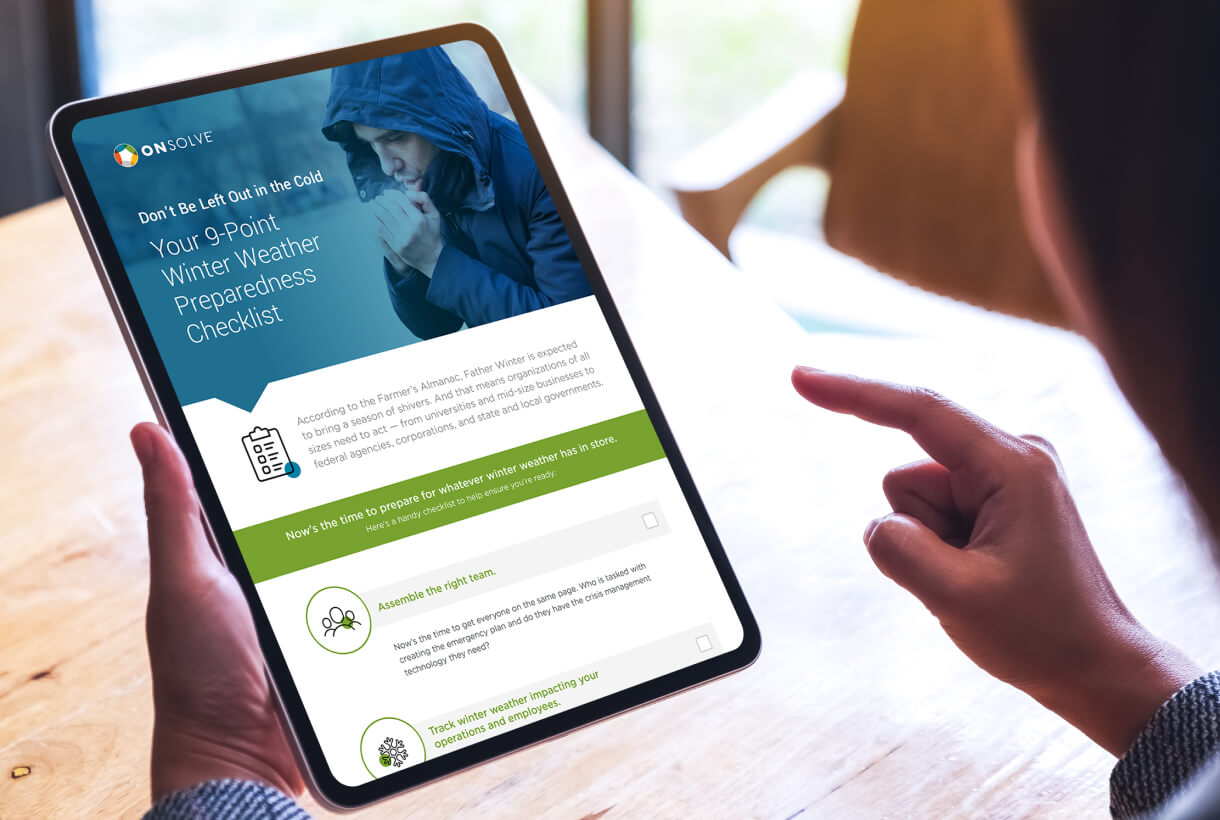Winter can be a bear. Frigid temperatures, gray skies and icy slush can leave everyone ready to growl and hibernate. To ensure communications stay crisp and clear when cold moves in, organizations need a sound strategy for employee messaging. Now’s the time to get your winter crisis communications plan in place, so you can keep all your people connected and protected all season long.
3 Tips for an Employee Communications Strategy to Weather the Winter
1. Post your inclement weather administrative policies.
When a major storm is on the way, employees want to know when the office will close and how the company will handle pay and time off. With many workers returning to the office post-pandemic at least a few days a week, this information can mean the difference between an employee who stays home during a blizzard versus one who gets in an accident traveling to work.
By posting employee safety policies on your company intranet where they’re accessible around the clock, you can ensure everyone knows what to do, who to contact and how. Formatting the policies as FAQs will make them more engaging and increase readership. A message board is another option for employees to easily access updates on office closures and related information.
2. Invest in a reliable mass notification system.
Effective internal communications are the foundation of proactive crisis management. A well-designed system for employee messaging will help you execute smoothly and methodically when snow and ice threaten both employee safety and business continuity.
The calm before the storm is the time to prepare your mass notification strategy. As winter approaches, you can review weather predictions for your region and model different emergency scenarios. A historical reporting solution enables risk and security professionals to conduct a geographical analysis on specific locations and timeframes. The ability to identify the most common winter weather events in a region in the past helps create a more informed communications plan for the coming winter season.
The right system will also enable organizations to take advantage of best practices for employee messaging by giving leaders the ability to:
- Utilize alert templates: Don’t wait until a storm to create alerts. Instead, craft employee messages in advance from templates in your mass alerting system. If conditions change abruptly, you can edit these templates quickly to keep everyone up to date.
- Create targeted contact groups: Mass notification systems make it easy to target groups of employees by a range of criteria, including geographic location and department. This ensures the right people receive the right information at the right time.
- Gather accurate contact information: Incomplete or out-of-date contact information shouldn’t be the reason you can’t reach employees during an emergency. Encourage everyone to log into the self-update portal of your mass notification system before winter to make sure their contact information is accurate for work, home and mobile numbers, email addresses and social media. They can also set their preferred method of communication so they’re more likely to see alerts as soon as they’re delivered.
- Activate two-way communications: Employees may feel disconnected when inclement weather causes other modes of communication to go down. Multi-modal options with two-way communications will keep everyone connected, while providing employees with a means to mark themselves safe or request help when needed.
A reliable system for mass notification will offer all these options, backed up by sophisticated automation. The ability to contact all your people with just a few clicks can save lives, prevent accidents and injuries, and instill confidence amongst your staff.
9-Point Winter Weather Preparedness Checklist
Prepare your organization for winter weather threats with this 9-point checklist.
3. Review past performance and give employees a pre-season preview.
Take time to review how well your mass notification system fared the previous winter. Begin by examining metrics, such as which modes (text, mobile app, email, phone and social channels) reached the most recipients and how many people received sent messages. The right system will offer read receipts and convenient reporting with an audit trail to expedite this process.
After you’ve reviewed your performance from last winter, incorporate what you’ve learned into this year’s communications plan for improved employee safety. It’s vital to test your plan and the emergency notification system that supports it well before winter weather takes hold. This time of year, everyone quickly becomes wrapped up in year-end business, shopping, school breaks and vacations, making inclement weather even more of an aggravation.
Take time to run drills ahead of time so all users can familiarize themselves with the mass notification system. That way, when a real winter emergency occurs, they’re already familiar with the technology. Drills are another opportunity to determine who didn’t receive the practice alerts and take corrective action before an actual weather emergency.
Create and send alerts that proactively prepare your employees for winter weather. For example, send messages covering topics like:
- Parking restrictions at the workplace during snowstorms
- Expectations for employees when their children’s schools are delayed or closed
- Directions to building emergency kits for the office and their vehicles
- Reminders to update contact information
The Right Technology Will Keep Communications from Getting Cold
Severe winter weather is unavoidable, but it doesn’t have to result in a communications freeze. With an efficient strategy supported by a reliable system for employee messaging, you can start protecting your people long before the chill sets in.
Ready to learn more? Download our Guide to Best Practices for Managing Critical Winter Weather Events.



